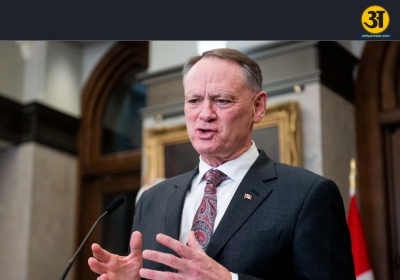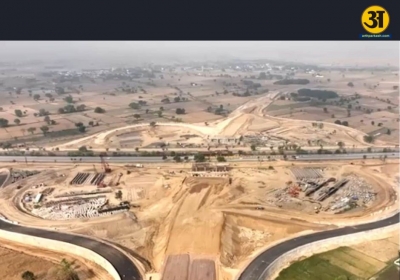.jpeg)
First ever evidence of a galaxy merger that hosted a Fast Radio Burst.
Scientists in Pune obtain first evidence of a galaxy merger
Using the Giant Metrewave Radio Telescope, a group of astronomers from Pune have found the first ever evidence of a galaxy merger that hosted a Fast Radio Burst (FRB) (GMRT).
Fast Radio Bursts are incredibly brilliant radio pulses that shoot across the sky in any direction for less than a few milliseconds, making them extremely difficult to detect. Astronomers all across the world are baffled by the source of FRBs. Gaseous matter and stars from neighbouring galaxies containing FRBs are currently being studied for this purpose.
Nearly 1,000 FRBs have been identified since their first detection some 15 years ago. Emerging from far away, some FRBs can either be a one-event flash or with definitive periodicity known as repeater FRBs.
Researchers from the TIFR – National Centre for Radio Astrophysics (NCRA) in Pune and the University of California designated FRB20180916B as the host galaxy for the FRB. It was on the outskirts of a galaxy about half a billion light years away, emitting radio pulses once every 16 days. FRB20180916B was discovered by the Canadian Hydrogen Intensity Mapping experiment (CHIME), which was responsible for discovering almost 800 FRBs.
The galaxy under examination had 20 times fewer stars but just two times as much atomic hydrogen as our Milky Way, according to the researchers. In theory, a galaxy with abundant atomic hydrogen gas — the primary fuel for star formation — should have a high rate of active star formation.
The host galaxy’s atomic hydrogen gas was discovered to be ten times more than that of surrounding galaxies. However, despite the abundance of atomic hydrogen gas, the number of stars was relatively low.
According to Balpreet Kaur, a fourth-year PhD student at NCRA and the principal author of the study published in the Astrophysical Journal Letters, “the surplus hydrogen gas was recently obtained after a possible merger between two galaxies.”
The atomic hydrogen gas may have been squeezed as a result of the recent merger of the two galaxies. The progenitor of FRB20180916B, according to experts, is most likely a big star that developed as a result of the recent merger event.
It’s worth noting that this is the first time astronomers investigating FRBs have used radio imaging to look at atomic hydrogen gas.
Importantly, the NCRA-operated GMRT, whose 30 steerable antennas were efficiently combined to follow the FRB host galaxy, would not have been able to detect the galaxy merger.
“We were able to map the atomic hydrogen within the FRB host galaxy while also tracing hydrogen in the adjacent companion galaxy using different combinations of GMRT antennas,” stated Professor Nissim Kanekar, a senior NCRA researcher who was part of the work.
The majority of FRBs, according to Kanekar, are located at significant distances away, and research into similar FRB host galaxies is anticipated in the near future.





